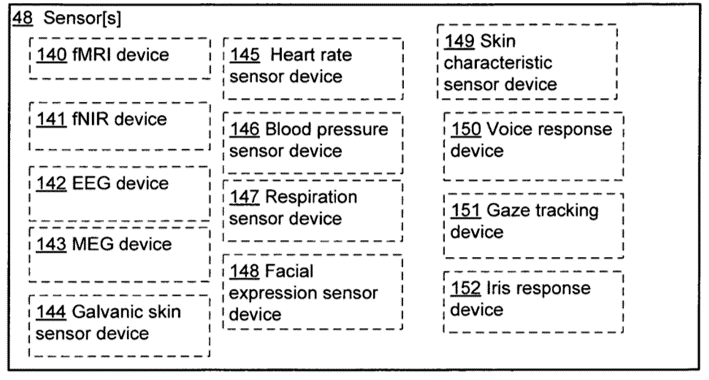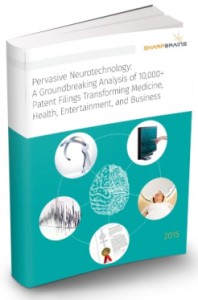Next: Will brain sensors be able to infer the mental state of a person–and, for example, identify sarcasm in a message?

-– Illustrative image from U.S. Patent No. 8,082,215
Today we highlight a thought-provoking patent by Intellectual Ventures. (As mentioned, we are featuring foundational Pervasive Neurotech patents–from older to newer by issue date–to gain a glimpse into future applications)
U.S. Patent No. 8,082,215: Acquisition and particular association of inference data indicative of inferred mental states of authoring users
- Assignee(s): The Invention Science Fund I, LLC (Intellectual Ventures)
- Inventor(s): Edward K. Y. Jung, Eric C. Leuthardt, Royce A. Levien, Robert W. Lord, Mark A.
- Malamud, John D. Rinaldo, Jr., Lowell L. Wood, JR.
- Technology Category: Neuro-monitoring
- Issue Date: December 20, 2011
SharpBrains’ Take:
Focused on evaluating the mental state of a message’s author, the ‘215 patent describes some interesting aspects of neurotechnology that make the patent noteworthy. Electronic communication has become pervasive in society, but the intent of the message may be “lost” in transmission, for example when an email or text recipient interprets a message as literal despite the sender’s intent of sarcasm. The ‘215 patent describes a method for inferring data, for example through EEG or fMRI sensors, associated with the mental state of an author of an electronic message and identifying a congruity (or incongruity) between that mental state and inferred mental state from the communication itself. The broad independent claims along with the extensive specification (spanning 57 illustration sheets and 41 pages of written material) are among the factors making the ‘215 patent compelling. The ‘215 patent is assigned to the Invention Science Fund I which is owned and managed by Intellectual Ventures — one of the top five US patent holders as of 2011.
Abstract:
A computationally implemented method includes, but is not limited to: acquiring a first inference data indicative of an inferred mental state of a first authoring user in connection with a particular item of an electronic message, acquiring a second inference data indicative of an inferred mental state of a second authoring user in connection with the particular item of the electronic message; and associating the first inference data and the second inference data with the particular item. In addition to the foregoing, other method aspects are described in the claims, drawings, and text forming a part of the present disclosure.
Illustrative Claim 1. A system, comprising:
- an inference data acquisition module configured to acquire inference data including a first inference data that indicates an inferred mental state of a first authoring user in connection with a particular item of an electronic message and a second inference data that indicates an inferred mental state of a second authoring user in connection with the particular item of the electronic message; and
- an inference data association module configured to associate the first inference data and the second inference data with the particular item.
 To learn more about market data, trends and leading companies in the digital brain health space –digital platforms for brain/ cognitive assessment, monitoring and enhancement– check out this market report. To learn more about our analysis of 10,000+ patent filings, check out this IP & innovation neurotech report.
To learn more about market data, trends and leading companies in the digital brain health space –digital platforms for brain/ cognitive assessment, monitoring and enhancement– check out this market report. To learn more about our analysis of 10,000+ patent filings, check out this IP & innovation neurotech report.


